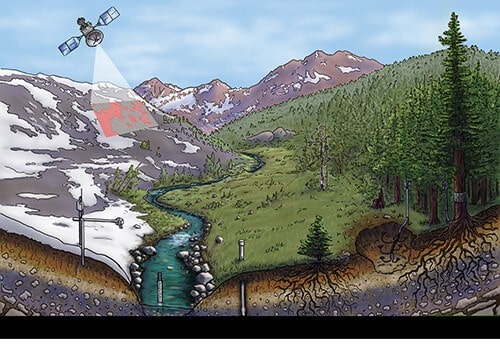Anyone who has ever driven in freezing rain knows all too well the potential hazards of an ice storm. These powerful winter weather events are also capable of catastrophic ecological and socio-economic impacts on forest ecosystems, affecting forest species and productivity, and even increasing the risk of fire.
Syracuse University bio-geochemist Charley Driscoll and U.S. Department of Agriculture (USDA) Forest Service ecologist Lindsey Rustad are part of a team supported by the National Science Foundation (NSF) to scientifically monitor more precisely how a forest ecosystem responds to and recovers from ice storms. And, the researchers are not waiting on Mother Nature to provide the right weather. They’re creating their own ice storms in New Hampshire’s Hubbard Brook Experimental Forest.
The research in this episode was supported by NSF award #1457675, Collaborative Research: Understanding the Impacts of Ice Storms on Forest Ecosystems of the Northeastern United States.

